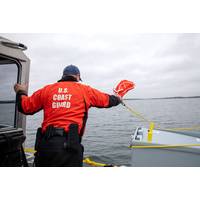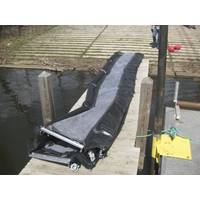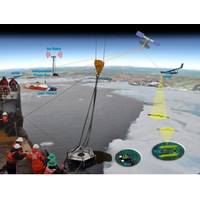
US Navy, Coast Guard Evaluate Use of Underwater Threat Detection System
Naval Undersea Warfare Center (NUWC) Division Newport’s Argus Expeditionary Maritime Defense System team recently partnered with the U.S. Coast Guard Research and Development Center to evaluate capabilities that could aid the Coast Guard’s detection efforts, particularly with counter-unmanned undersea vehicle missions.As part of its comprehensive efforts to provide maritime security and protect critical infrastructure, the Coast Guard is looking for solutions that would enable detection of unmanned undersea vehicles (UUVs) in near-shore environments. A limited user evaluation of the Argus

Coast Guard Tests Underwater Oil Barrier System
Members of the U.S. Coast Guard Research and Development Center oil spill response research team are testing an underwater barrier system designed to mitigate the impacts of sunken oil traveling along a river bottom.Mitigating or reducing the impact of oil is usually accomplished by minimizing the spread of oil on the river bottom and deflecting it, either to a collection area for recovery or away from sensitive areas. The underwater barrier system tested in Kalamazoo at the end of April 23 was specifically designed for deployment in inland water bodies such as rivers, streams and small lakes.Although

Coast Guard to Test Arctic Oil Spill Technologies
The U.S. Coast Guard Research and Development Center (RDC) plans to test and evaluate oil spill detection and recovery technologies in the Arctic Ocean as part of Operation Arctic Shield 2013. A multi-agency team of engineers and scientists led by RDC researchers will conduct a series of demonstrations in September 2013 aboard Coast Guard Cutter Healy to test and evaluate capabilities of various unmanned aerial systems (UAS), an unmanned underwater vehicle (UUV) and a remotely operated vehicle (ROV) to search for simulated oil spills. To support planned UAS testing, the RDC has assembled a


 February 2025
February 2025





